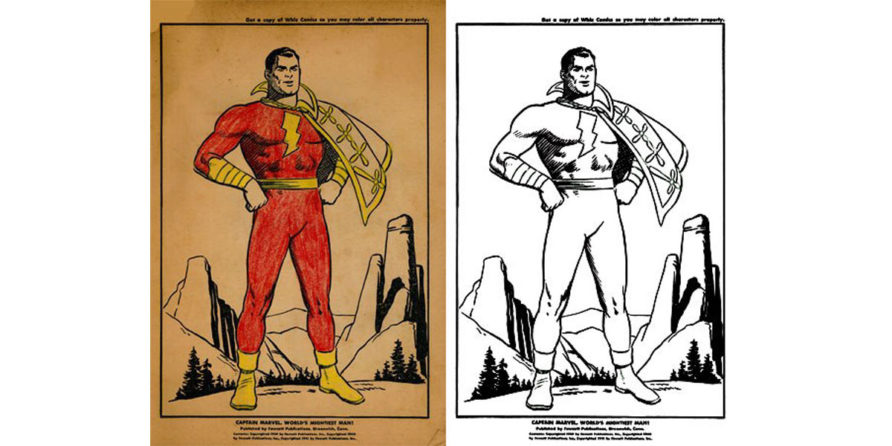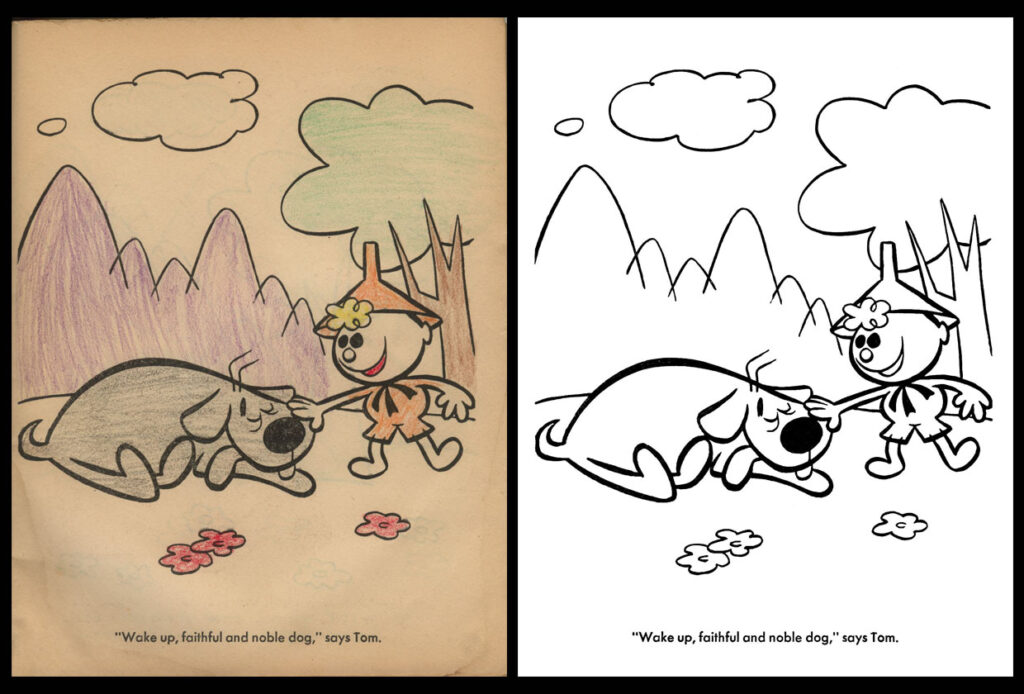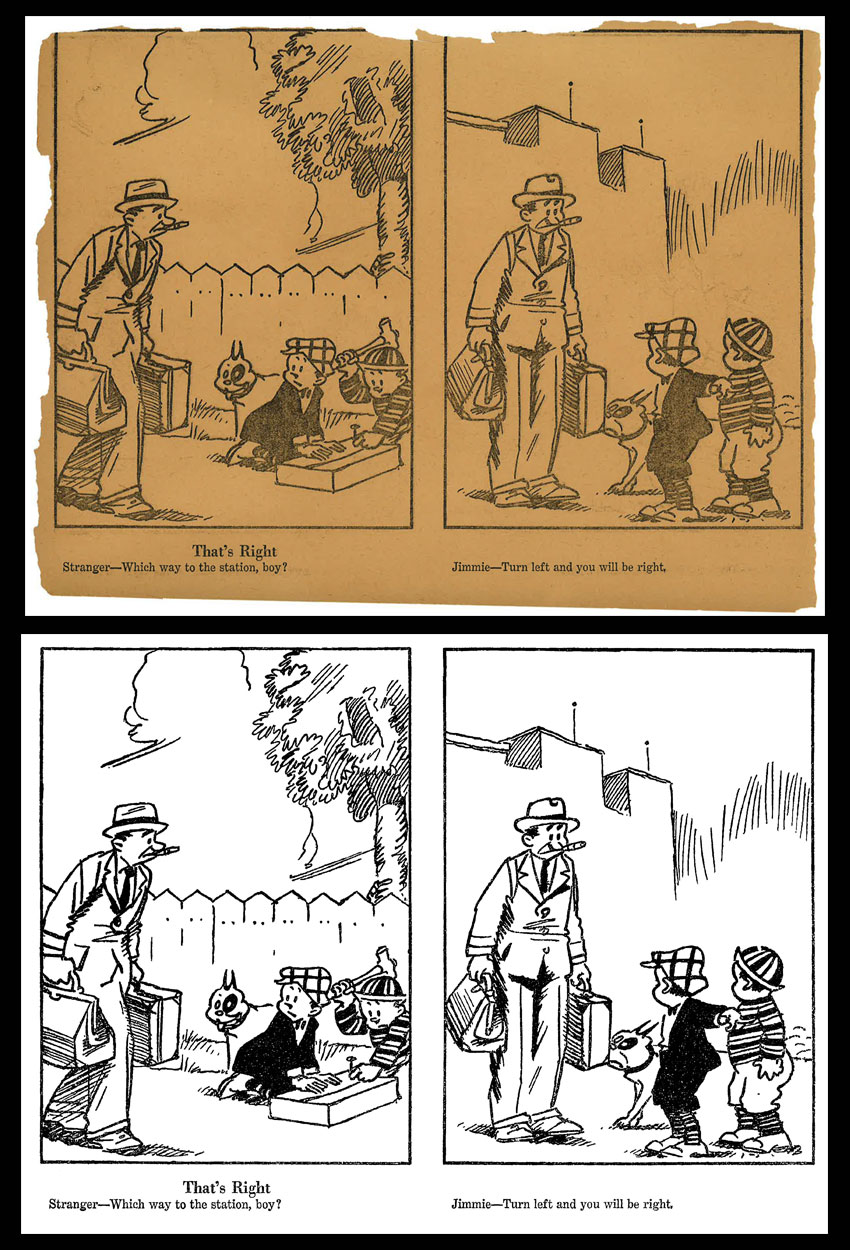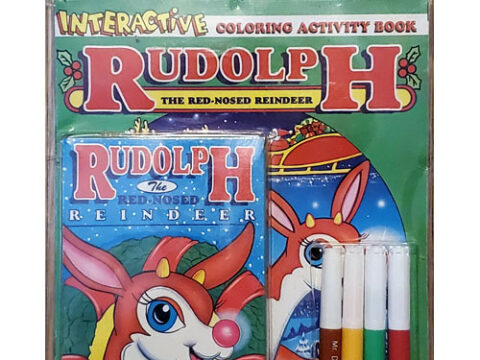
While watching a Buster Keaton marathon on Turner Classic Movies, and reading the restoration details presented with each film, I realized just how similar my work was to theirs – searching for complete copies to clean and digitally restore, using several copies pieced together to create a complete copy, and even racing the clock with a deteriorating volume that is crumbling due to it being poorly stored for decades. At least with films, the production companies usually have master prints locked away in a vault somewhere, or maybe in private libraries like the Cohens’ or the Library of Congress. But with these books, if the original artwork isn’t in file folders at the publisher or a library somewhere, only whatever original retail copies that still exist are all that is left.
A complete, unused book that has been stored in a temperature controlled environment is a piece of cake to remaster. It just needs to be scanned cover to cover, which can take hours or days depending on the page count, and then painstakingly cleaned up in Adobe ImageReady (my tool of choice) to get rid of any noise. If the book is in the same decent condition, but has some coloring, it will take longer as I have to magnify those colored pages to the pixel level and use the pencil and replace color tools to get rid of all of the coloring, and black crayon is the worst!
But, like old films, sometimes it becomes a more intensive endeavor where I have to look for multiple copies that I can scan and combine to make a workable copy that needs far less effort to remaster. And this is usually no small task. In most cases, when I need to find several copies that have to be combined, it takes years of watching ebay, etsy, and looking around online to find useful copies. And the fact that so many sellers like to overprice things, it stretches the preservation time frame out even further. There are some books that I’ve needed additional copies of for over 10 years, and I refuse to spend $50 or more for a book that is only worth $20-30. I’m patient, a cheaper copy will eventually show up.

The worst ones, though, are the ones that I know are on their last legs. The ones that have to “die” in order to live forever. I’m making undead books, after all. It’s the brittle books, which has nothing to do with age but with the storage environment, or the sticker funs where the sticker page is fused to the adjacent coloring page. Ugh, they are heart breakers. Having a book crumble at the touch, so I have to be extra slow and careful when scanning each side of each page, but still having them flake away during the process. And for the sticker funs…they have to be disassembled. The viewable pages have to be scanned first, then the stuck pages need to be rubbed with water until it soaks through the sticker page and it can be slowly separated from the coloring page, which has to fully air dry before scanning it, otherwise it is a bit discolored from the water and the scan isn’t as clear. But the sticker page is completely lost, because hair dryers don’t loosen the glue and the water disintegrates it.

It’s a labor of love and commitment. This same ethic is applied to films, paintings, historic buildings, and so on. Why shouldn’t it be granted to time capsules like coloring books? 15+ years! I’ve been working on this for that long. Digitizing over 5,000 books is no small task. It doesn’t happen overnight. And that is JUST the scanning process. If I somehow had the time to remaster 1 book each day, it would still take almost 15 additional years. It’s hard to scan and focus on cleaning up a book at the same time. I get deep in the zone when I am working on a book and it’s hard to rally between the operations. I don’t know if I’ll be able to do them all, but at least they’ll be saved for generations to come. And who knows, maybe one day someone else will pick up the mantle and continue this process, and future releases will get the same royal treatment.






